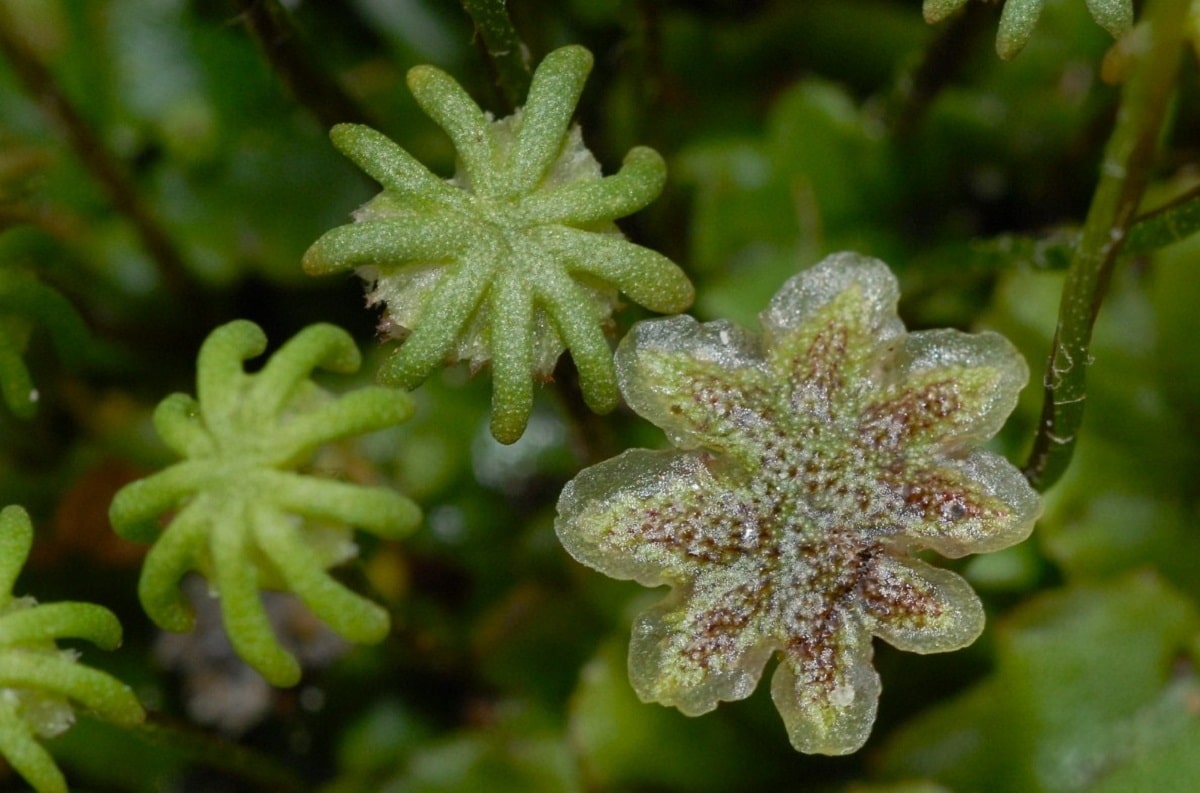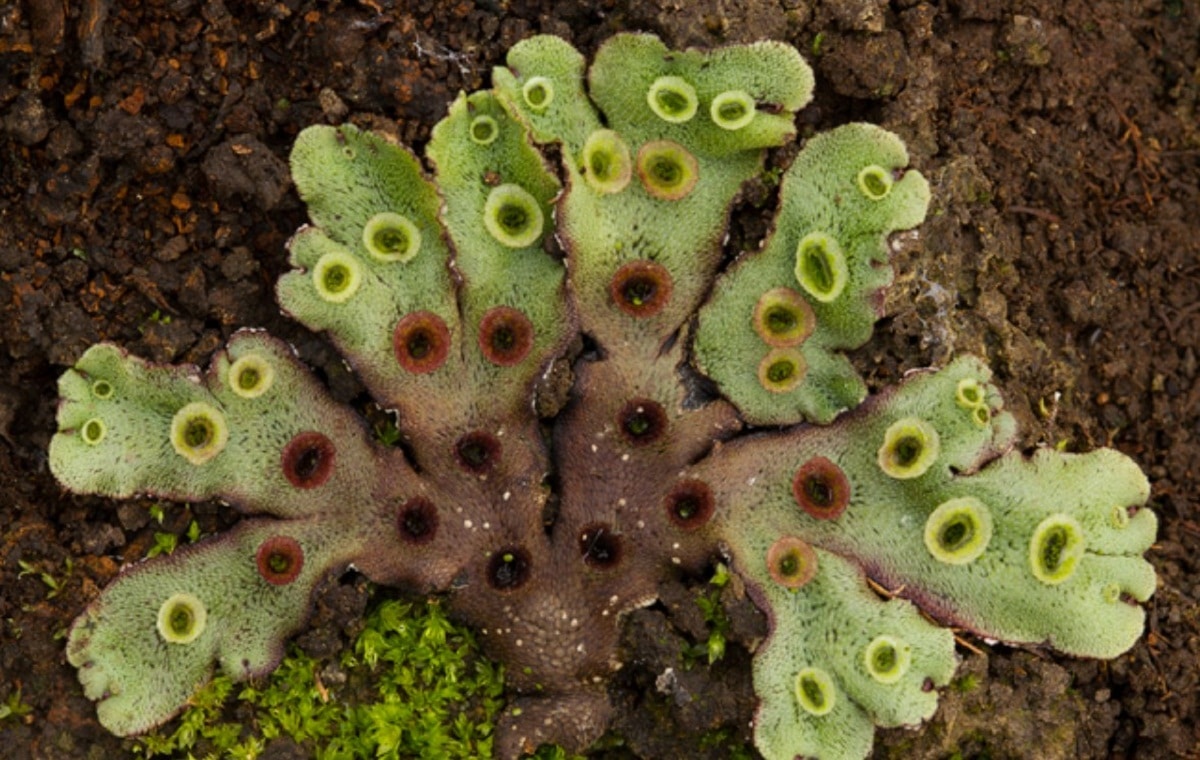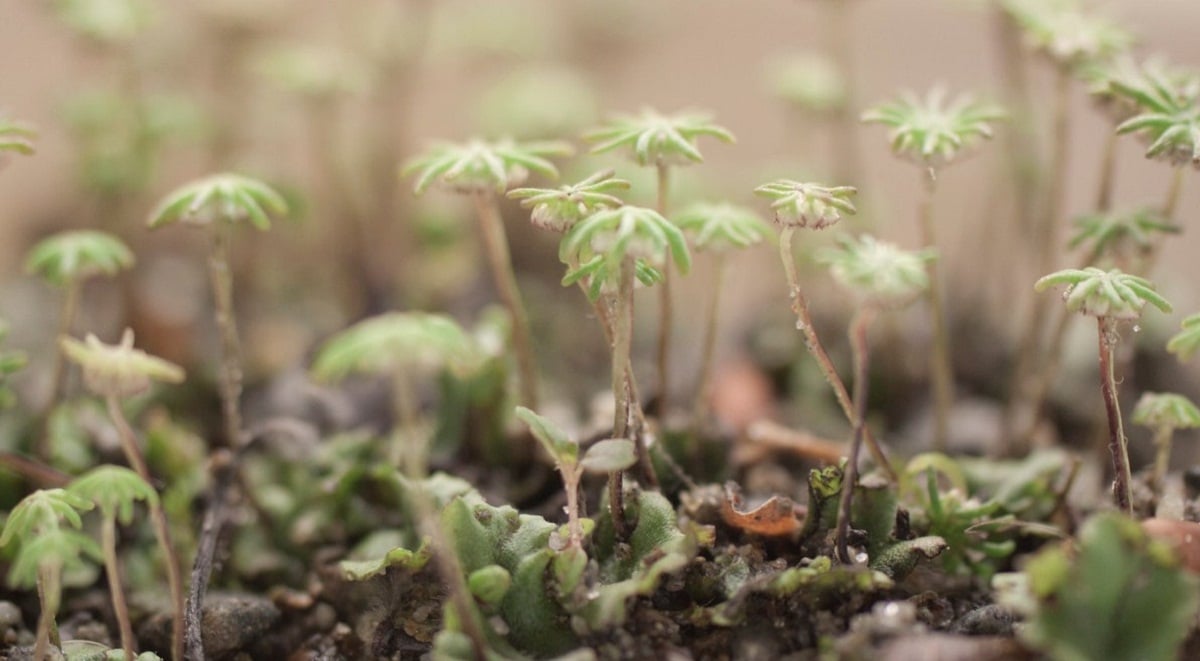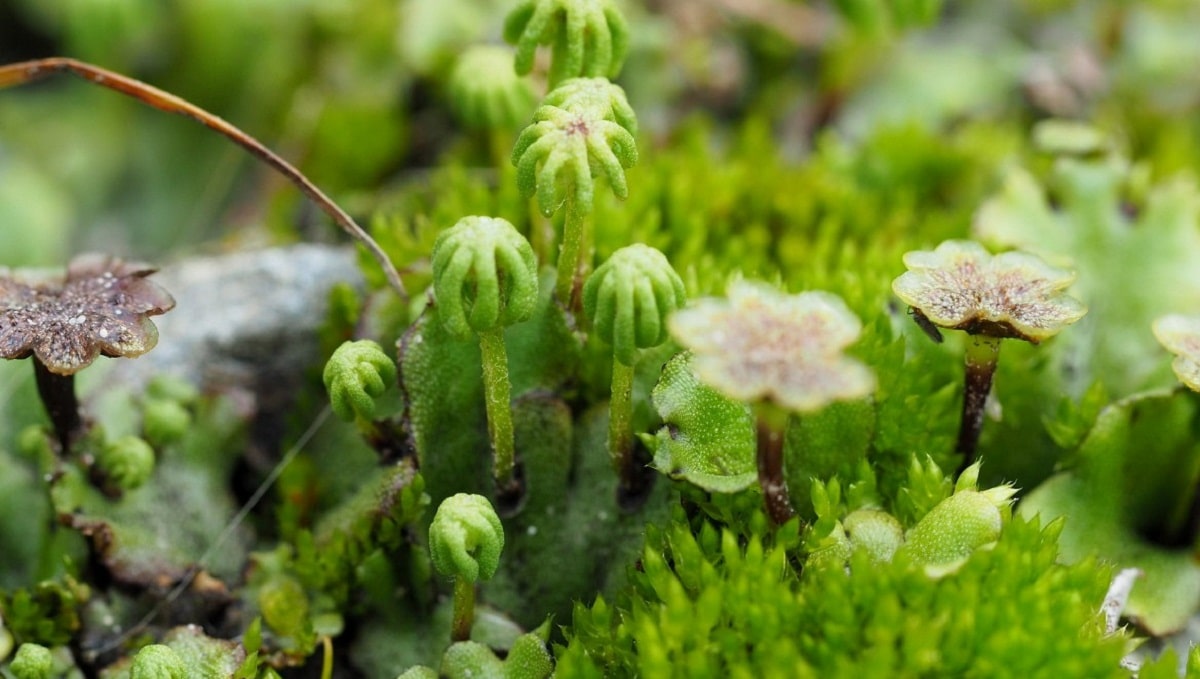
Not all the plants discussed on this page have to be intended for gardening or used for interior decoration. There are plants that are found in specific habitats and areas that, no matter how rare and unique they are, cannot be removed from their environment if you do not have the necessary conditions and place.
For example, Marchantia polymorpha. Its scientific name is not very common, but there is a small possibility that you know it under the name of umbrella liverwort, although it also has a couple of other names such as “Instep” and “Hepatic of the sources”.
Origin and general data

This plant does not have a specific place of origin. It can be found all over the world, especially in areas with tropical climates. This species and subspecies have even been observed in the Arctic, so from the outset we can say that its resistance to the climate is quite high and it supports a great diversity of climates.
Generally, the source liverwort usually grows mainly on riverbanks, as well as in streams, swamps, dunes, and natural pools. Although it belongs to a family of plants where most grow in areas with dry substrates and soils, this specific species tends to adapt better to semi-aquatic areas.
Features Marchantia polymorpha
This is a kind of liverwort that it has a rosette whose stem is flattened and with forked branches. The stems of the plant tend to grow to about 10 cm long and no more than 2 cm wide. And although the plant in its youth has a green color, when they are too old, they turn a purple or brown color.
La Marchantia polymorpha It has something peculiar that is a cover in its lower part that gives them the ability to be fixed to the ground. Their way of reproducing tends to look a lot like an umbrella or better known as gametophores. This means that it has male and female parts, so the reproduction of the plant in a natural way is asexual.
The average size of a single plant is 80 cm, but thanks to its incredible ability to spread, can cover many hectares (if the whole extension is taken as one).
Its fruits are spore type, this being a liver plant that is related to mosses. It is usually green in color during its growth and adult stage and turns brown or purple when it has passed its age limit.
It has a characteristic smell that can be detected from a distance, in addition to having flowers with asexual characteristics that allow it to reproduce themselves, thanks to the sperm and egg creation.
The flowering time is between March and August. During this time it is when its reproduction begins. The stems have a maximum length of 10 cm and tend to be cross-linked. Each grid looks similar to a barrel, and can be grown very easily by keeping the soil moist with distilled water.
Uses

Although the plant tends to have a rather peculiar appearance and for some a little dark, the Marchantia polymorpha es an incredibly beneficial species for the environment, especially when wildfires occur.
This is because they have the ability to support, grow and live in soils where concentrations of lead and other heavy metals are high. Of course, the appearance of this species can mean that its place of growth and the surroundings have high levels of heavy metals, so it is not very rare to see this plant grow in areas where other species cannot survive.
Natural uses
Naturally, the earth employs Marchantia polymorpha when a forest fire occurs. After the fire occurs, the soil tends to have high concentrations of lime. Once the burned area has been invaded, this is where the Marchantia polymorpha it will start to grow little by little. This will cover the entire burned area.
The reasons for this were previously unknown. But it is currently known that is one of the easiest and most practical ways to make vegetation grow back much more easily if it has been covered. Basically, what it does in places like this, is to prepare the soil and the conditions so that new vegetation can grow.
Medical uses
On the other hand, in past times it was believed that this species could be used for ailments in the lungs and treat tuberculosis. It is also effective for deal with fungal skin and nail problems, which is why it is widely used as a home treatment against these problems.
In the same sense, it is known today that it can be used for medical purposes. Well contains beneficial properties to treat blood spills and it is effective in dealing with inflammations. It does not matter which area of the body is inflamed, as long as it is used in the form of a plaster, it will work.

Likewise, you can also take infusions to deal with diseases such as jaundice. If the proper preparation of this plant is ingested, it can be useful against liver ailments, as well as it can heal insteps. For something it has a common name that was already mentioned.
Thus, it has been shown that this is a plant species which has enormous potential both for human consumption and for practical uses against burning and forest fires.
In another order of ideas, It is a plant that you can have in your home garden if you take into account the conditions that this species needs to live.. After all, you can have it for your personal use or have it as an ornament.
Just make sure you have enough space and limit their growth during flowering time. In case you want this specimen for your garden, most likely, you will have to pay a slightly high sum to be able to acquire it, although it all depends a lot on the place where you are located and the demand for the plant.